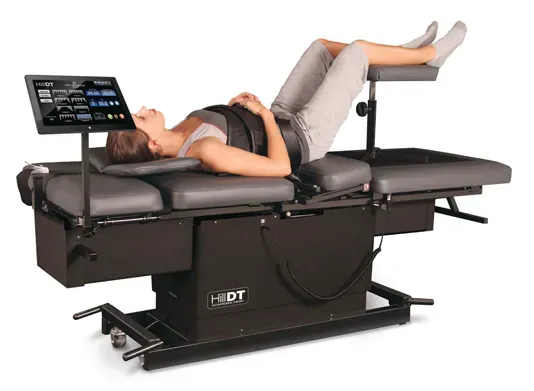
How Spinal Decompression Therapy Helps Relieve Back Pain and Disc Injuries
If you’ve been struggling with chronic back pain, sciatica, or a herniated disc, spinal decompression therapy could offer relief without the need for surgery. This non-invasive treatment works by gently stretching the spine, relieving pressure on the discs and promoting natural healing.
It is often considered a reliable alternative to procedures like laminectomies and microdiscectomies, especially for those looking to avoid long recovery times.
What Happens During Spinal Decompression Therapy
To understand spinal decompression, imagine your spine like a slinky. When you’re hunched forward or your posture is poor, certain areas of your spine compress, much like how a slinky bends and the rings squeeze together. This pressure can cause the discs between your vertebrae to bulge or herniate, leading to pain, stiffness, and reduced mobility.
Spinal decompression therapy gently pulls the spine in the opposite direction, helping to:
Reduce pressure on compressed discs
Improve circulation and nutrient flow to damaged tissue
Create space for discs to return to their natural position
Relieve tension on nearby nerves
This stretching process helps restore movement and reduce inflammation in areas that may have been irritated for months or even years.
Conditions That Respond Well to Spinal Decompression
This therapy is especially effective for people with disc-related injuries or nerve compression. Common conditions treated include:
Herniated or bulging discs
Degenerative disc disease
Sciatica
Spinal stenosis
Sharp, shooting leg pain
Chronic lower back pain
Many patients experience noticeable relief after just a few sessions, particularly when spinal decompression is combined with chiropractic care, stretching, or physical therapy.
Is Spinal Decompression Therapy Right for You?
If you’ve been diagnosed with any of the conditions above or are seeking a nonsurgical solution for long-standing back pain, spinal decompression therapy may be worth exploring.
Our team will evaluate your symptoms, review imaging or diagnoses, and determine whether decompression is a safe and effective option for your specific case.
To learn more or schedule your first appointment, give us a call today. Our staff is here to answer questions, explain the process, and help you take the next step toward lasting relief.


